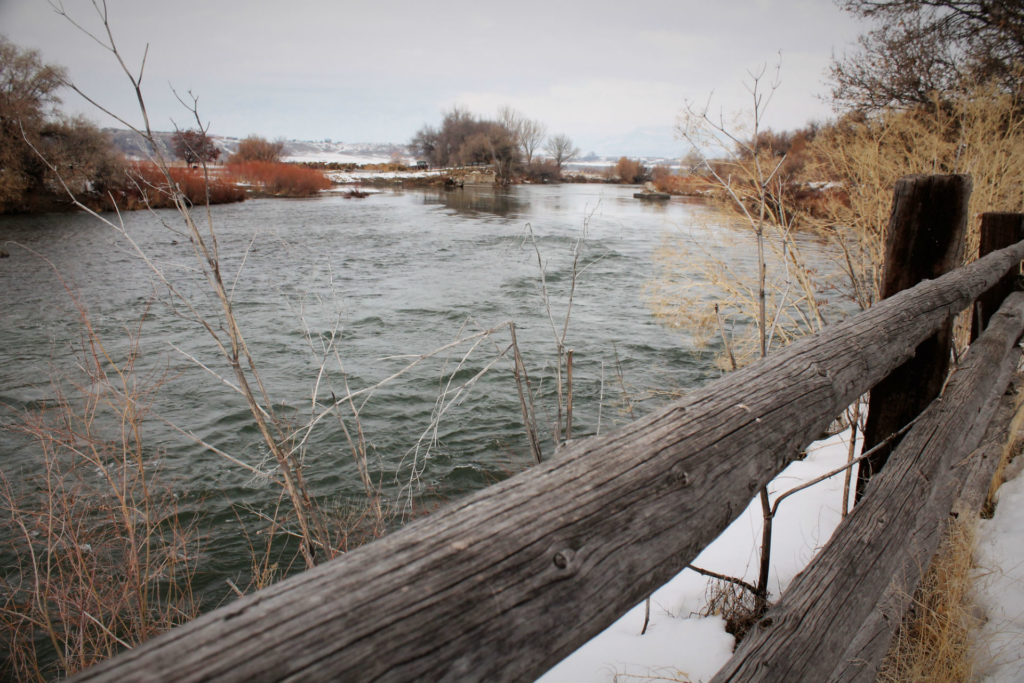
A photo of the Bear River east of the Valley View Highway. The area is potential reservoir site near Fielding on the Bear River to collect water to accommodate a growing population in northern Utah
COLLINSTON – Utah Division of Water Resources (DWR) was directed by the Utah Legislature in 1991 to come up with 220,000 acre-feet of water in the state to accommodate a growing population at a price tag of up to $2.8 billion. Half of the state’s water needs are expected to come from the Bear River Water Conservancy, at 60,000 acre-feet, and the same amount from the Cache Water District.

“However, the entire 220,000 acre-feet is not expected to be needed by the projected timeline of 2045/2050,” Marisa Egbert, DWR civil engineer, said. “It is expected that the full development of the 220,000 acre-feet will take decades to be needed.”
She said 220,000 acre-feet is enough water for another 200,000-300,000 typical households.
After several years of studying some 46 dam locations by the DWR, they recently published their latest Executive Summary for the Bear River Development. The state is eyeing some potential reservoir sites near Fielding on the Bear River, the Fielding reservoir, Whites Valley reservoir west of Plymouth, Cub River Reservoir above Cutler reservoir and a Temple Fork reservoir in Logan Canyon. The last reservoir site investigated was a new one at South Willard Bay.
DWR may not need all six of those locations and there may be different combinations of those sites for the water needed.
“The reservoirs will need a large-diameter pipeline (7-10 feet) through Box Elder County (particularly past Willard Bay),” Egbert said. “For a pipeline that size, a corridor of 100 feet wide is needed for construction and maintenance purposes.”
UTA also is looking for a corridor through the area for a future FrontRunner track. So the DWR and UTA may be working together on a shared corridor through Box Elder County adjacent to the UP railroad tracks.”
“We are both looking at getting some space,” she said. “That being said, it may not be where the pipeline will go in the end.
“There are a myriad of factors that go into planning for water and a lot of it has to do with how people change the way we use water.”
“We looked over the water right history and the data,” Egbert added. “We need reservoirs because some years we have water, and some years we don’t.”
The citizens of Utah have done a good job conserving water since 2015, and it has made a big difference.
“I wasn’t taught about conservation, but the next generation is, my children are already learning so much more about it than I did as a child,” Egbert said. “A lot of it has to do with education.”
No one is using the water rights the dams will use, and we will not be using agricultural water rights either.
“We are at the table talking to the people that know the Bear River and the Great Salt Lake,” Egbert said. “We will be doing a lot of work in the next few years; it might not be until 2025 and 2030 before we are ready to start.”

